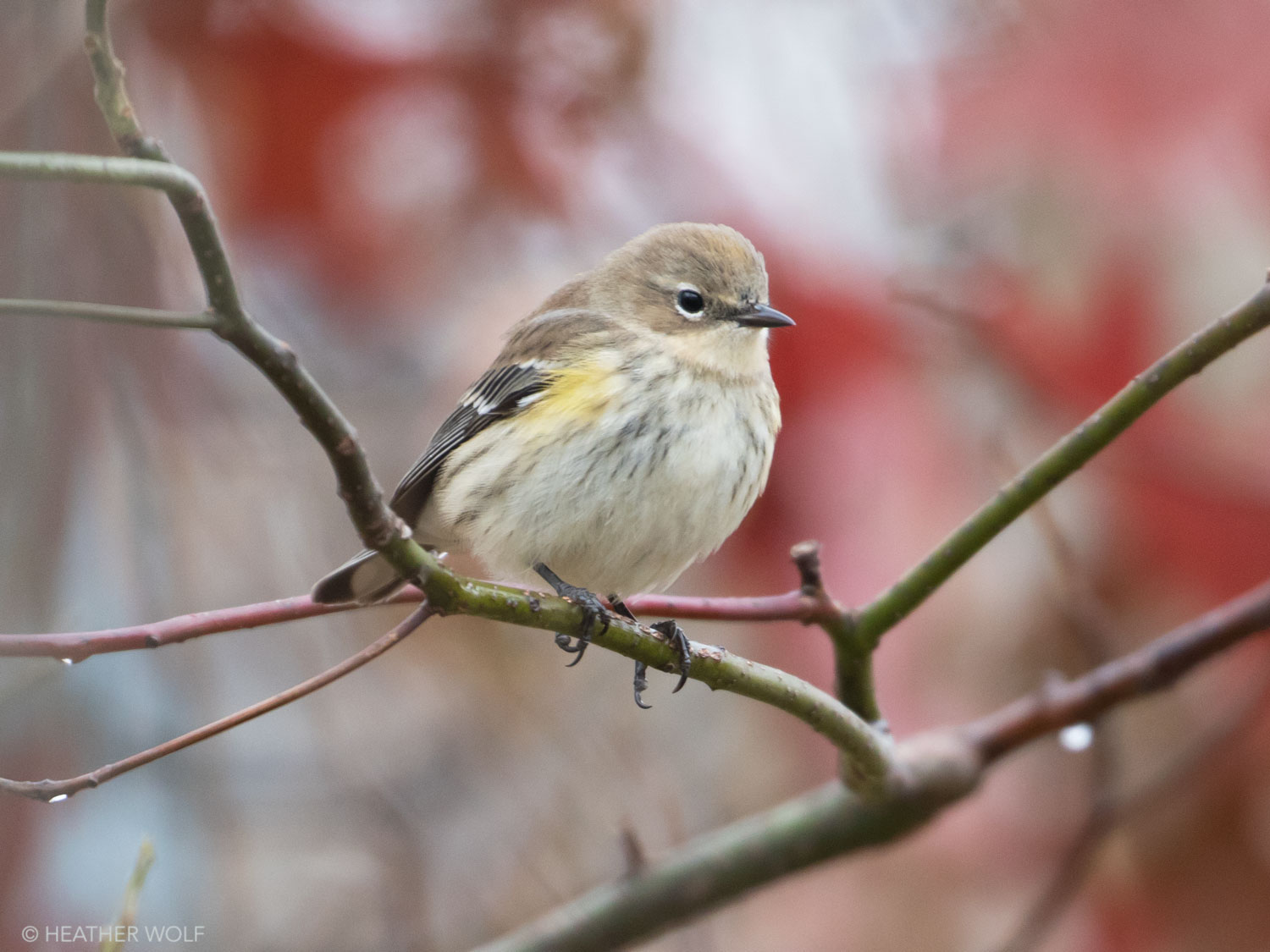Brooklyn Bird Watch: February 17
Yellow-Rumped Warbler. Scientific Name: Setophaga coronate

Today, Brooklyn Bird Watch features a Heather Wolf photo of the Yellow-rumped Warbler seen in Brooklyn Bridge Park.
These birds flock in large numbers, migrating along the eastern seaboard where there are plenty of wax-myrtle berries. The Yellow-rumped Warbler is the only warbler capable of digesting the waxes found in bayberries and wax myrtles. They have a subdued color palette during winter, but in the springtime their plumage transforms into an impressive display of bright yellow, charcoal gray and black, and bold white.
The Yellow-rumped Warblers are the most versatile foragers of all the warblers. Unlike other warblers, as Cornell says, in spring they can be seen fluttering out from trees to catch a flying insect, and they can quickly adjust to eating berries in the fall. These birds have also been seen foraging for insects on washed-up seaweed along a beach, “skimming from the surface of rivers and the ocean, picking them out of spiderwebs, and grabbing them off piles of manure.”

Brooklyn Boro
View MoreNew York City’s most populous borough, Brooklyn, is home to nearly 2.6 million residents. If Brooklyn were an independent city it would be the fourth largest city in the United States. While Brooklyn has become the epitome of ‘cool and hip’ in recent years, for those that were born here, raised families here and improved communities over the years, Brooklyn has never been ‘uncool’.